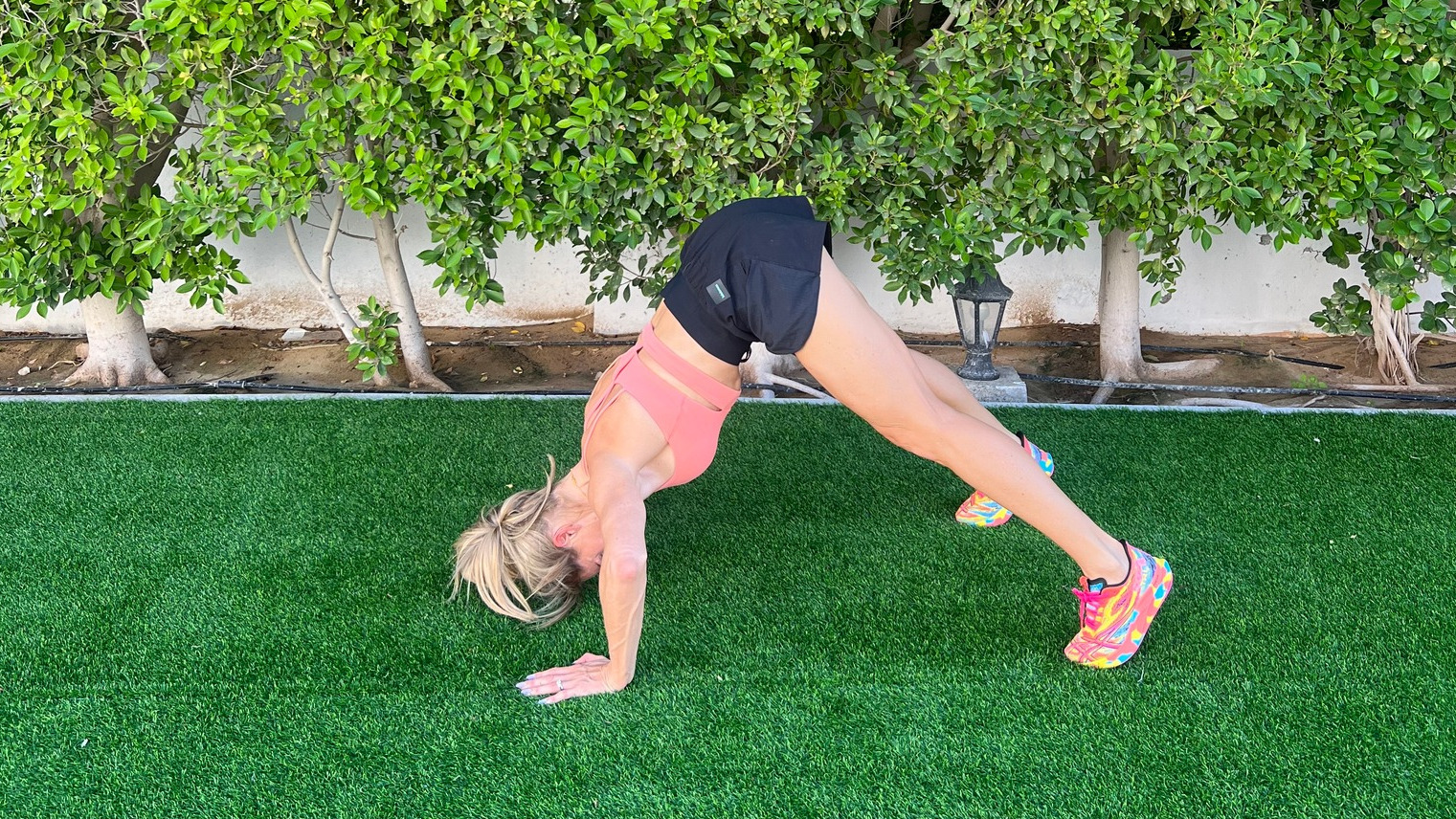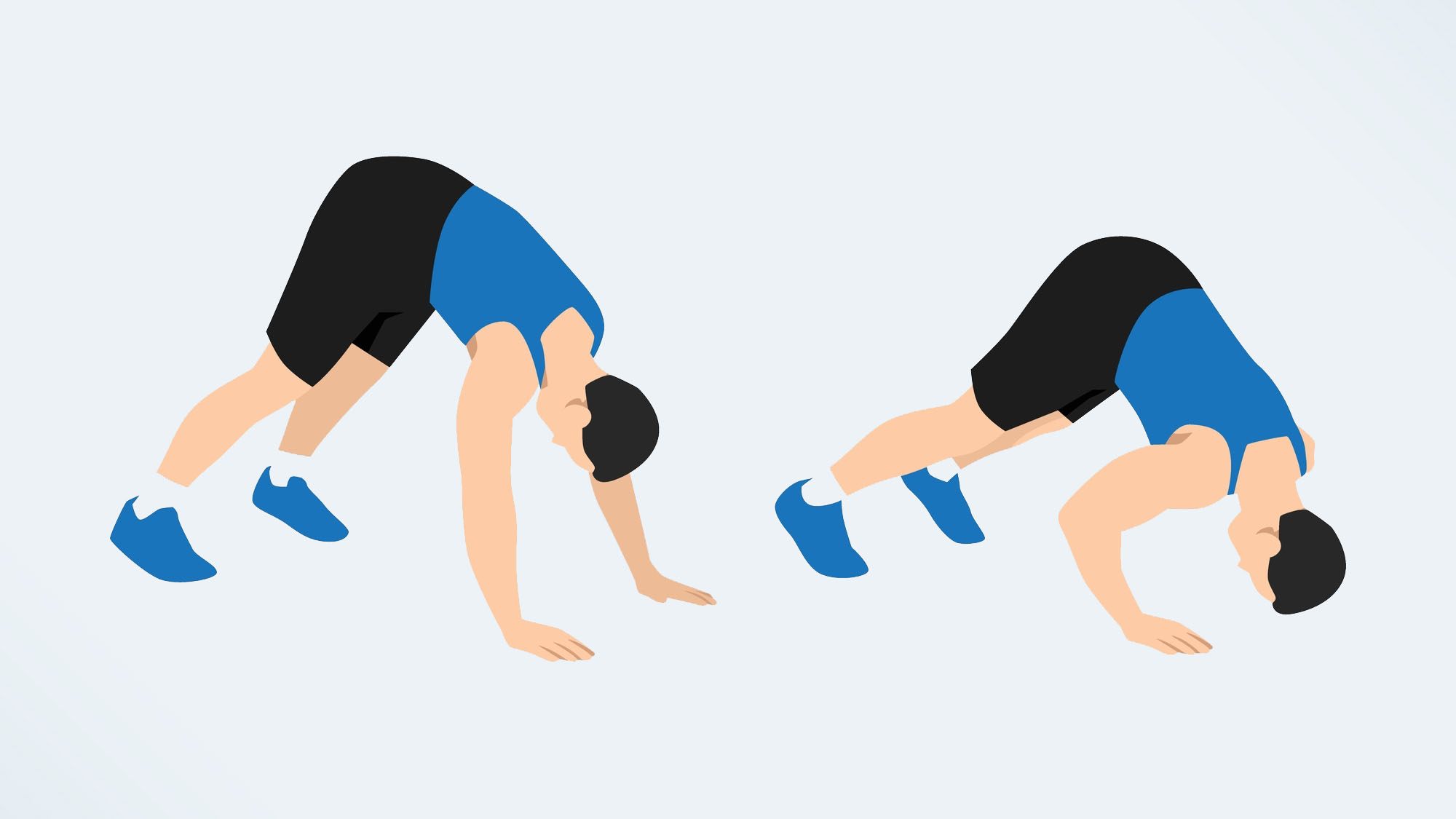
Don’t have weights handy? Add this one bodyweight compound exercise into your upper body resistance training program.
I like to use pike push-ups when I don’t have barbells, the best adjustable dumbbells, kettlebells, or even resistance bands available and desire a push-up variation that will torch my shoulders, pecs and triceps.
When you can’t dial into the progressive overload technique of gradually increasing weight — increase the intensity by trying different exercises, tempos, reps and sets. Here’s how to do pike push-ups, the benefits and why I recommend trying them.
What are pike push-ups?
The pike push-up vertically loads the body rather than the horizontal load typical of a standard bodyweight push-up. It sends the weight to the fronts of your shoulders, namely the anterior deltoids, mimicking an overhead press more closely.
It takes a degree of back-body flexibility in the hamstrings and lower back, but you can bend your knees softly if needed. Practiced regularly, the upper body exercise helps build toward a handstand or handstand push-up while improving mobility, shoulder stability, balance and flexibility.
If you’re curious about what muscles are at work, the anterior deltoids, triceps, pectoralis major and core get the most attention. Find out what happened when our writer tackled pike push-ups every day for a week to learn more.
How to do a pike push-up

- Start in a push-up position with your arms extended and wrists stacked beneath your shoulders
- Brace your stomach, then lift your hips backward similar to a downward facing dog
- Press through your hands, then walk your feet in a few steps and send your weight forward over your shoulders
- Lift onto the balls of your feet or tiptoes
- Keep your legs straight or softly bend the knees if you have tight hamstrings. Your elbows should pull closely toward your ribs
- Lower the crown of your head to the floor while bending your elbows, pause, then press up again.
How can I make pike push-ups harder?
Once you can perform 3-4 sets of 8-12 reps unbroken, try scaling up your pike push-ups by creating a deficit; there are a few ways to do this.
First, try adding a box or step. Elevate your feet onto the edge of it, lift your hips high, then send your weight over your shoulders. Positioning your lower body much higher than your upper body will load the working muscle groups even more, ramping up the burn factor for your chest, arms and shoulders. You can adjust the box height or step as you get stronger.
You could also try holding a kettlebell or dumbbell in each hand, which means you’ll have further to travel when lowering your head to reach the ground.
Lastly, try adding a stability ball or Swiss ball under one or both feet; the instability will challenge muscles to work harder to keep you stable and balanced against a moving object.
How can I make pike push-ups easier?
Softly bend your knees and practice reaching your head further to the mat as you build upper body strength. You can also elevate your hands on a bench or step to help lift your upper body without creating further distance for your head to travel.
Handstand push-ups, kipping handstand push-ups and standard handstands are all challenging gymnastics exercises found in many exercise programs and the skills section of CrossFit workouts. Practicing a push-up from a vertical position with your feet on the ground will help you prepare for these more advanced compound movements.
Bodyweight exercises like pike push-ups also help improve your relative strength — your ability to push, pull, squat and generally shift or move with your own weight without external load.
As important as resistance training is for strengthening your muscles, joints, bones and ligaments, I believe functional fitness is paramount — increasing your ability to move with your body weight will improve the quality of your movements, flexibility and range of motion, translating to better performance when you hit next hit the weights.
Remember, you should always be able to perform exercises primarily using your body weight and a full range of motion before adding an external load.







